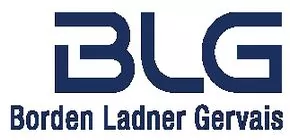- within Intellectual Property, Consumer Protection, Food, Drugs, Healthcare and Life Sciences topic(s)
- with Senior Company Executives, HR and Finance and Tax Executives
- with readers working within the Accounting & Consultancy, Banking & Credit and Insurance industries
On March 4, 2025, the United States imposed by Executive Order a 25 per cent tariff on the importation of nearly all Canadian-origin goods (10 per cent on certain energy-related exports). The tariffs were implemented under the International Emergency Economic Powers Act (IEEPA).
Days later, the United States announced that goods imported from Canada that qualify for duty-free preferential treatment under the Canada-United States-Mexico Agreement (CUSMA) would be exempted from the tariffs. This exemption remains in effect.
In order to take advantage of this exemption, businesses will need a firm understanding of the CUSMA rules of origin.
CUSMA rules of origin
Only goods that satisfy the rules of origin contained in Chapter 4 of the CUSMA will qualify for preferential treatment. The rules of origin set out the degree, or nature, or "value added" of production that must be undertaken in Canada, Mexico, or the United States for goods to be considered "originating" in CUSMA.
The CUSMA rules of origin include both general rules of origin and product-specific rules of origin (PSROs).
As a general rule, goods wholly obtained or produced entirely in the territory of one or more CUSMA countries are considered "originating" under the CUSMA and therefore eligible for preferential treatment.
Minerals extracted or crops grown in a particular country.
Goods comprising imported materials – in part or entirely – could still be considered originating if they meet the criteria set out in the applicable PSROs. All goods are subject to a PSRO, based on where they are classified in the Harmonized Commodity Description and Coding System (HS). CUSMA PSROs generally include one or more of the following three criteria:
- Tariff shift: a change in tariff classification where the final good must be classified under a different HS subheading than the inputs used to make the good.
Transforming foreign sourced oak classified under subheading 4407.91 into a kitchen table classified under 9403.40.
- Regional value content: where a certain percentage of the final good's value must be added in CUSMA countries.
Certain steel saws classified under subheading 8202.31 may be considered originating if there is a regional value content of not less than 60 per cent using the transaction value method or 50 per cent using the net cost method.
- Process: where the good must undergo a specified process.
Coats classified under heading 61.01 will be considered originating if the good is cut (or knit to shape) and sewn or otherwise assembled in one or more CUSMA countries.
Claiming preferential treatment and the tariff exemption
Goods that satisfy the CUSMA rules of origin are not automatically granted preferential treatment.
To benefit from preferential treatment, an importer of record – as tariffs are paid by importers of record in the country of import, and not by exporters – must present a certificate of origin. The certificate of origin may be completed by the exporter, producer, or importer. Only those officials who have the legal vested authority to sign on behalf of a company, or who have sufficient knowledge of the origin of the goods may sign the certificate. Only goods accompanied by a certificate of origin will qualify for preferential treatment under the CUSMA and therefore exempt from the IEEPA tariffs.
While there is no prescribed form a certificate of origin must take, Annex 5-A of the CUSMA sets out mandatory data elements, including:
- certifier (exporter, producer, or importer)
- certifier's name, address, and contact info
- exporter's name, address, and contact info
- producer's name, address, and contact info (if different)
- importer's name, address, and contact info (if known)
- description and HS code of the good
- origin criterion
- blanket period (if applicable)
- certifier's signature and date
A certificate of origin may be in the form of an excel sheet that sets out all the parts used in the manufacture of a good, their original tariff classification, and the resulting tariff shift.
The content of this article is intended to provide a general guide to the subject matter. Specialist advice should be sought about your specific circumstances.



